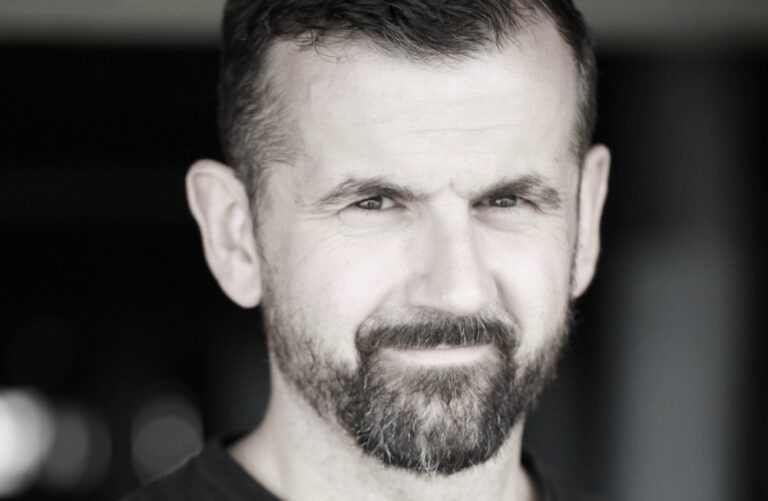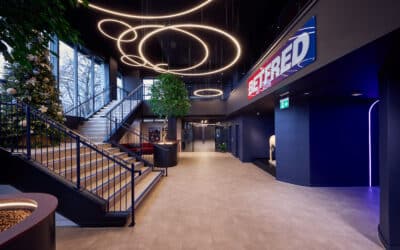‘My take on’ is designed to be a platform for an honest perspective on a relevant issue or subject. To put forward a candidate to give their take on an issue, please email david@prolificnorth.co.uk.
This week Anthony Hartley-Denton, Managing Director of Mi, gives his take on white labelling.
A white label product is defined as a product or service produced by one company (the producer) that other companies (the marketers) rebrand to make it appear as if they had made it.
Let’s be clear though. This is white labeling as it relates to the supply of professional creative services, not P & G no frills washing up liquid. Will this burn some bridges? Quite possibly but not with the clients and agencies that matter.
Two years ago, we made the decision to longer produce work white-label. It just didn’t feel right and hadn’t for some time. No direct client communication – just hidden agendas, derailed projects and wasted time. And critically no recognition for our team or business in an industry reliant on cache of past project work. Oh and not to forget being the first one under the bus if there was a problem.
The decision was prompted with two back to back projects which each in their own way illustrated clearly how the model no longer worked for us.
The first found me in an agency boardroom along with six agency staff being asked to give up for free our IP. Highly proprietary in house code developed over the previous 18 months at our expensive was to be given up FOC so said agency could bring in the project under the already to low project budget. That meeting ended soon after.
I’ll say one thing though – at least you know where you stand with them. You aren’t getting credit. It’s the clandestine situations were you wrongfully believe the project is operating under full disclosure. It’s that moment of shock of realization when you are actually being introduced to the client as X agency’s CGI department that catches you off guard. As best deceptive and at worst reckless. A quick Google of our credentials and the game would have been up for said agency and by association us.
So we stopped taking on white label jobs. Turnover temporarily dipped as expected, but was soon restored with newer, healthy client relationships who respected our professional services.
We found the biggest barrier was ourselves. When we fully committed to dropping white-label work we were asked less and less, clients perhaps sensing the option wasn’t their anymore.
It’s not all bad though, and it would be remiss of me to exclusively focus on the bad experiences. At the other end of the bell curve, you have the professionally secure client/agency who assembles the best team to complement their shortcomings and just get the job done with no fuss.
We experienced this first hand recently after finishing a near year-long project working alongside a renowned New York advertising agency. Throughout its duration we were in the room. Our opinion and counsel respected and observed by client and agency alike. When the project goes live in a few weeks everyone involved is being credited.
On another soon-to-be-released PS4 game trailer, our client unprompted and on a televised industry interview gave us full credit for the character design in their latest release. Ironically it was a collaboration with them but they backed off and gave us the credit they felt was due. Now that’s a class act.
My take on… Recruitment Consultant CriticsCreative types like us are mostly control freaks (in a good way). We are compelled to have a say in how long it should take to do a good job on the project. To to this we need to be able to discuss the brief and budget in detail. We can then suggest the optimal way to proceed, all the while client-facing.
This problem starts when a specialist is brought into a project long after the brief has been written and budget committed calcified. There is little room for movement. The architecture of the project has already been designed. Likely by a party who lacks specificity of knowledge pertaining to this brief. However, the subcontractor is expected to execute. If they can’t it’s likely someone else who will aqueous will be brought in.
This mode of thinking is exclusively goal orientated. Working openly and honestly with all your sub contractors is process driven. Agencies thwart their own best efforts and doom themselves to a less than optimal solution for their client if all the necessary parties are not at the table. This outmoded model is the preserve of the paranoid and the covetous. The ones who wouldn’t have left their girlfriend alone with their mate while they went to the bar.
If design feedback is filtered through another party, such as an account or project manager, then this intermediary is expected to impart feedback truthfully and accurately. But even if they do, the intermediary still breaks the flow of a conversation as they stand between the designer and the client with the subtleties of communication lost.
The more separation that is put between the processes of the client and the designer, the harder it is to understand each other’s decisions and motivations. The simplest instruction and nuances are lost in translation and perspectives distorted over time. The client ends up the egotistical enemy so the creative is relegated to the role of awkward prima donna. This isn’t fair on anyone.
In closing, and to address the elephant in the room and in the interests of full disclosure: technically, I run an agency. But this article is my one-pager of what I want to ensure doesn’t happen with our great team of collaborators. A warning to myself, a “not to do” list, a rule with which to measure straight against and our public commitment to best practice.
Dividing a project into secret silos – aside from being disingenuous – willingly forfeits the real joy of creative collaboration. Many of my fondest working memories lay in working to the small hours of the morning on a brief which had supplier and client alike really fired up. In the immediacy of the process, success was largely irrelevant and the creative journey became key. We were all accountable, all in the battle as we burnt the boats on the beach. The shame is what is lost, the beautiful and mutual joyous interaction when the sum becomes much more than its constituent parts.
No one really believes that in today’s connected marketplace you did it all yourself and do you know what – that’s completely OK.
To give your take on a particular issue or subject, contact david@prolificnorth.co.uk










